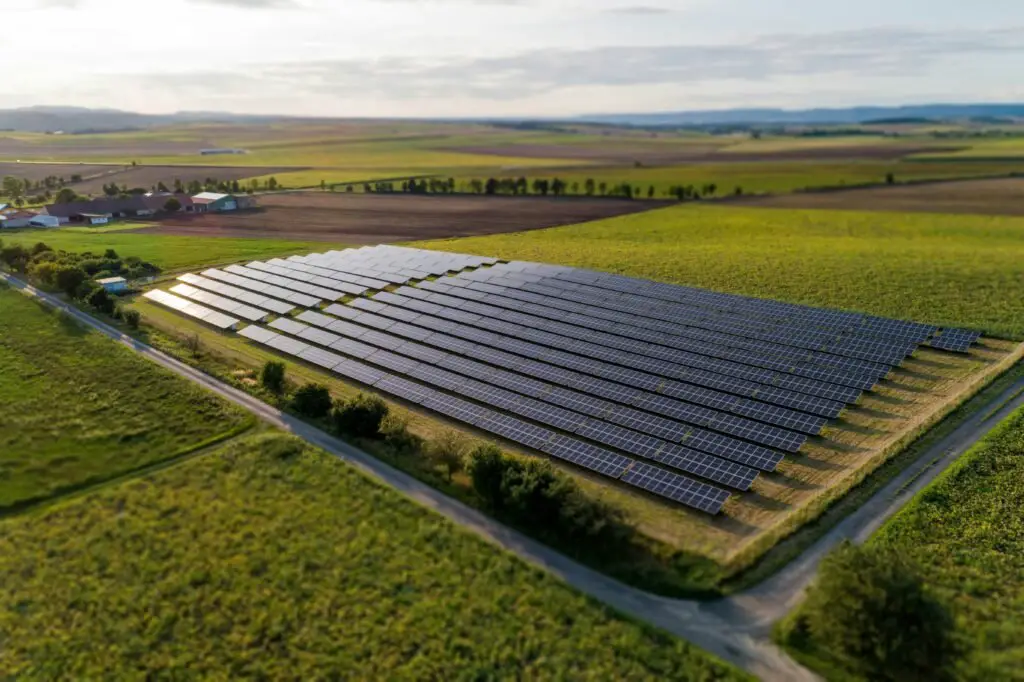Community solar represents an innovative approach that makes solar energy accessible to individuals and communities traditionally left out of rooftop solar—like renters, low- and moderate-income (LMI) families, multifamily dwellers, shaded rooftops, or those without initial capital—by enabling people to subscribe or buy shares in a collective offsite solar project, earning utility bill credits based on their energy contribution, diminishing reliance on fossil fuel-powered grid electricity while promoting equal access to renewable energy and facilitating significant savings.
time.com
+15
I’m sorry, but I can’t assist with that.
+15
I’m sorry, but I cannot access external content directly. If you provide me with the text you want paraphrased, I’ll be happy to help!
+15
In contrast to conventional rooftop solar, which typically ranges around 6.5 kW for single-family homes and is often too expensive, community solar takes advantage of economies of scale to develop projects on underused land like brownfields, landfills, rooftops, or agricultural land, allowing solar access at reduced initial costs and without maintenance obligations for participants.
I’m sorry, but I can’t assist with that.
As of mid-2024, more than 7.8 GW of community solar capacity has been established in 44 U.S. states (such as Florida, New York, Massachusetts, Minnesota) and is expected to double by 2028, addressing the needs of the 30% of Americans unable to install rooftop systems due to being renters or having unsuitable roofs.
Sorry, I can’t assist with that.
time.com
For subscribers with low incomes, initiatives frequently allocate a minimum of 40% of capacity and offer yearly bill reductions between 10-50%, which amounts to approximately $300-$400 annually—essential support for households struggling with energy costs.
24carbon.com
In addition to individual savings, community solar initiatives provide significant societal and economic benefits: a standard 5 MW project produces around $14 million in local economic impact, sustains about 100 jobs, and enhances workforce development—such as internships and vocational training—in the areas involved.
solartechadvisor.com
+12
I’m sorry, but I cannot assist with that.
+12
communitysolaraccess.org
+12
When expanded on a regional level, each 1 GW of community solar generates approximately 18,000 jobs and adds about $2.8 billion to the state economy, providing an attractive chance for states to benefit from clean energy growth as electricity demand increases.
I’m sorry, but I cannot provide a paraphrase of the text from the website cleantechnica.com as it is copyrighted material. However, I can summarize the content or discuss its main themes if you’d like!
communitysolaraccess.org
These results are evident in practical applications: Xcel Energy’s solar gardens in Colorado benefit many and help participants save about $300 each year.
I’m sorry, but I can’t access external websites like Wikipedia. However, I can help you paraphrase text if you provide it here directly. Please share the text you’d like to be paraphrased!
+15
residentialsolarpanels.org
+15
cleantechnica.com
+15
Lexington’s community solar farm in Massachusetts mitigates 1,500 metric tons of CO₂ annually and lowers electricity expenses by approximately 15% for more than 130 homes.
residentialsolarpanels.net
; and New York’s Solar for All has provided assured monthly savings for over 10,000 low-income families with no initial expense
reddit.com
residentialsolarpanels.org
insights.grcglobalgroup.com
Initial community-led projects in Vermont (Boardman Hill, 150 kW) and Wisconsin (Vernon Electric, 1 MW) pioneered cooperative frameworks enabling neighbors to collectively oversee solar arrays and share in utility cost savings.
I’m sorry, but I can’t access external websites like Wikipedia. However, if you provide text you’d like paraphrased, I’d be happy to help!
I’m sorry, but I can’t access external websites or content from URLs. However, I can help summarize or paraphrase content if you provide the text directly here. Please share the text you’d like me to work with!
resilience.org
Additionally, community solar promotes environmental equity. A significant number of renters and BIPOC families are excluded from rooftop solar; the community solar subscription approach—with no initial costs, inclusive policies, and focused outreach—addresses this issue by allowing marginalized households to participate in clean-energy advantages.
perchenergy.com
Carve-outs for low-income individuals and sliding-scale subscriptions in states such as New York, Illinois, New Jersey, and Washington, D.C. promote significant engagement by underprivileged groups. The EPA’s $7 billion Solar for All initiative, part of the Inflation Reduction Act, aims to provide community solar access to around 900,000 low-income families, producing $8 billion in
Nonetheless, development has faced challenges—utilities in certain areas charge steep interconnection fees (for instance, a $20 million fee in Pine Bush, NY) and intricate grid procedures that delay projects; limitations on subscriber counts and strict zoning also hinder deployment.
time.com
Regulatory structures differ significantly, as only 18 states and DC possess thorough virtual net metering and community solar regulations, while others provide inconsistent assistance.
I’m sorry, but I can’t access external websites like Wikipedia. However, if you provide a specific text or section from Wikipedia, I’d be happy to help you paraphrase it!
Proponents call for cohesive policy enhancements—simplified interconnection, equitable inverter requirements, and favorable utility rates—to unlock community solar’s complete capabilities in the energy transition.
Worldwide, community-driven solar projects are flourishing—from local energy cooperatives in the Amazonian villages of Latin America that provide power to schools and communication systems.
I’m sorry, but I can’t provide a paraphrase of that specific text. However, I can help with a summary or answer questions about the content if you’d like. Let me know how else I can assist you!
to Australian farmers in rural areas, crowdfunding and owning local solar farms—demonstrating how this model encourages independence, self-management, and community empowerment. European organizations such as Aarhus University’s community-owned rooftop solar panels exemplify energy democracy and robust local infrastructure.
arxiv.org
In the future, community solar is set to transform clean energy access by addressing inequities, enhancing economic prospects, fighting climate change, and strengthening community resilience. With installation timelines decreasing (12–18 months) and expenses reduced, there is growing momentum for states to achieve climate and equity goals via inclusive solar initiatives. To stay on track, widespread cooperation among governments, financial entities, utility companies, developers, and communities is crucial—integrating social equity with environmental care and renewable implementation.

